Philip John Webb
Gunner 301153 Philip John Webb, 10th Mountain Battery, Royal Garrison Artillery
Philip was born in Farnborough in 1896, the son of John William Webb and his wife Sarah née Quelch. This was not the famous Farnborough in Hampshire, home of the Farnborough International Air Show, but the small village of Farnborough, on the downs above Wantage, perhaps best known as the home of John Betjeman, the popular Poet Laureate who lived in the old rectory. A memorial window by his friend, the artist John Piper, can be seen in the village church.
Philip was one of a fairly typically sized family – though a large one in modern terms. Six of William and Sarah’s seven children have been identified: Caroline Rose (born 1886), Helen Gertrude (1888), Elsie Gladys (1894), Philip John (1896), Alec George Wilfred (1900) and Clara Frances (1904). In the 1911 census couples were asked how many children they had had in their marriage and how many were still alive: William’s answers show that one of their seven children had died young; this was Elsie Gladys, who died in 1904, aged only 10. There is, however, no sign of a seventh child in any census records.
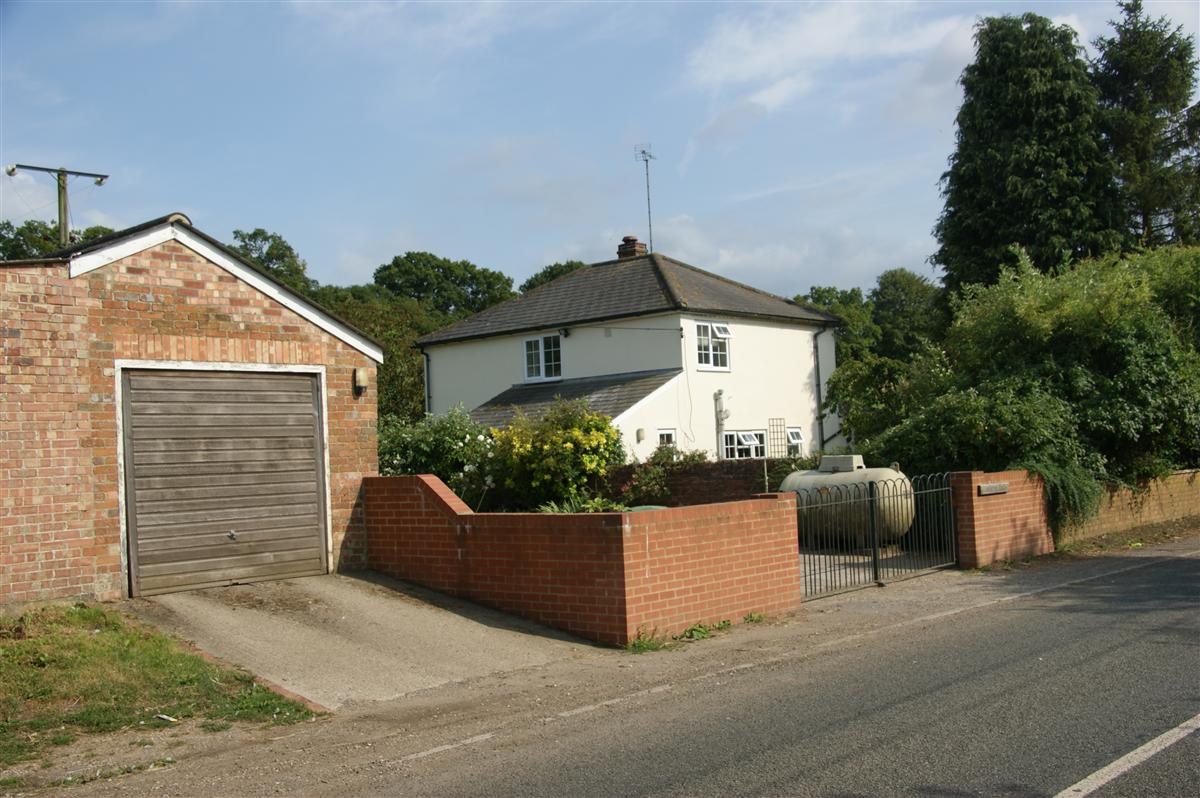
Whitelands in 2014. |
John Webb as a blacksmith, a trade that was always in demand. He worked in Steventon, Drayton and Farnborough – a path around Berkshire that can be seen in the birthplaces of his children. By 1911 he had made his last move, to Whitelands in the parish of Peasemore, an isolated cottage on the main Newbury/Wantage road. John does not appear in local directories of the period (1911 & 1915), where the village blacksmith in Peasemore is listed as Mrs Edith Goodchild; perhaps he was in her employ? If John crossed the Newbury/Wantage road outside his house and stood on the verge opposite he would have been standing in the parish of Brightwalton, which had no blacksmith listed in the directories. It seems that John and Sarah felt more a part of Brightwalton than Peasemore since Philip’s name appears on Brightwalton’s war memorials and not on Peasemore’s; perhaps John worked more there?
After finishing his schooling aged 13/14 Philip found a job as a grocer’s errand boy – a typical first job for a town lad, but less common in the villages where farm work predominated. Before long Philip moved to Newbury; where he worked for a local baker, George Whitehorn, whose main premises were in Bartholomew Street. This was a sizeable local business, a photograph from the 1930s shows 42 baking staff.
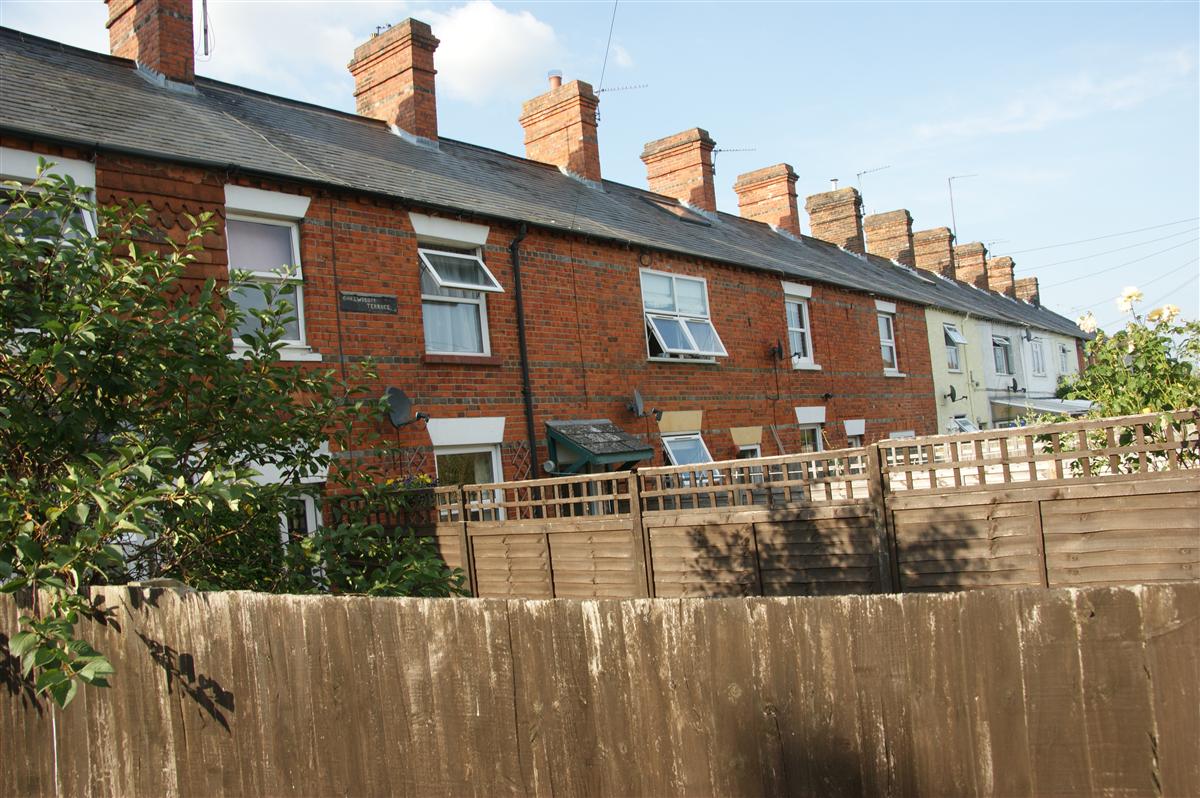
Shrewsbury Terrace, No 2 is the second house from the near end.. |
When war was declared in August 1914 young Philip had other matters on his mind; he was getting married. Later that year, on Christmas Day, he married his sweetheart, Emily Hazell. The newly-weds found accommodation at 2 Shrewsbury Terrace, Buckingham Road.
War then took Philip away from his bride and interrupted his baking career, he enlisted on 7 July 1915. He was posted to the Royal Garrison Artillery, custodians of many of the largest guns in use at the Front. His first taste of action was on the Western Front, where he was wounded at Vimy Ridge in 1916 – this was not at the famous Battle of Vimy Ridge, which took place in 1917, but a smaller German offensive in May 1916.
It seems that Philip was transferred to the 4th Highland Mountain Gun Brigade, a Territorial unit armed with mountain guns, artillery pieces designed for use in rough terrain they could be broken down into parts small enough to be carried by mules. In November 1916 they were sent to the Salonika Front in northern Greece. In Salonika, the biggest threat was from disease – as experienced by Philip when he suffered in turn from enteric fever, malaria and typhoid. He was evacuated from Salonika to hospital in Malta and from there to hospitals in Birmingham and Croydon.
Hopefully he was able to spend some time at home during his convalescence and to spend time with his son – Philip William Webb was born in early 1917 (suggesting Philip also had some home leave before he departed for Salonica).
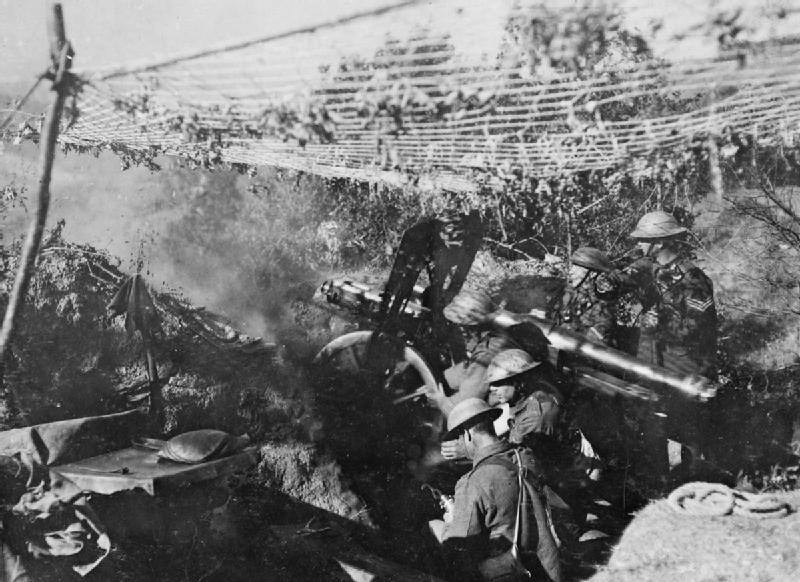
A moutain gun crew in action in Salonika (Imperial War Museum) |
The Egyptian Expeditionary Force (EEF) had been formed in 1916, combining the forces defending Egypt and the remnants of the Mediterranean Expeditionary Force from Gallipoli (many of whom were sent to France). Their first task was to defend the Suez Canal from the Ottoman Army; having defeated an attack on the canal they advanced across the Sinai Desert and into Palestine. They had a number of setbacks, notably at Gaza, but, by 1918 they had reached Jerusalem after which they descended into the Jordan Valley and captured Jericho.
On 14 March 1918 Philip was wounded, the report of his later death suggests that this occurred after ‘crossing the Jordan’. However, this does not fit with the campaign history because the EEF did not cross the Jordan in force until later that month, during the First Attack on Amman (also known as First Battle of Jordan). It is not at all unlikely that small reconnaissance parties had crossed the famous river before that date, but it seems unlikely that they would include artillery.
However, the result was that Philip was evacuated to hospital in Cairo, where he was evidently deemed well enough to be shipped home, a lengthy sea journey in those days. Back in England he was sent to the same Birmingham hospital that he spent time in on his return from Salonica. There his condition deteriorated, very possibly the result of an infection of his wound. He died there on 15 August 1918.
His funeral was reported in the next edition of the local paper, though it does not appear to have been checked for grammar etc – it reads more like the reporter’s notes than a polished article:
Newbury Weekly News, 22 August 1918 - Newbury
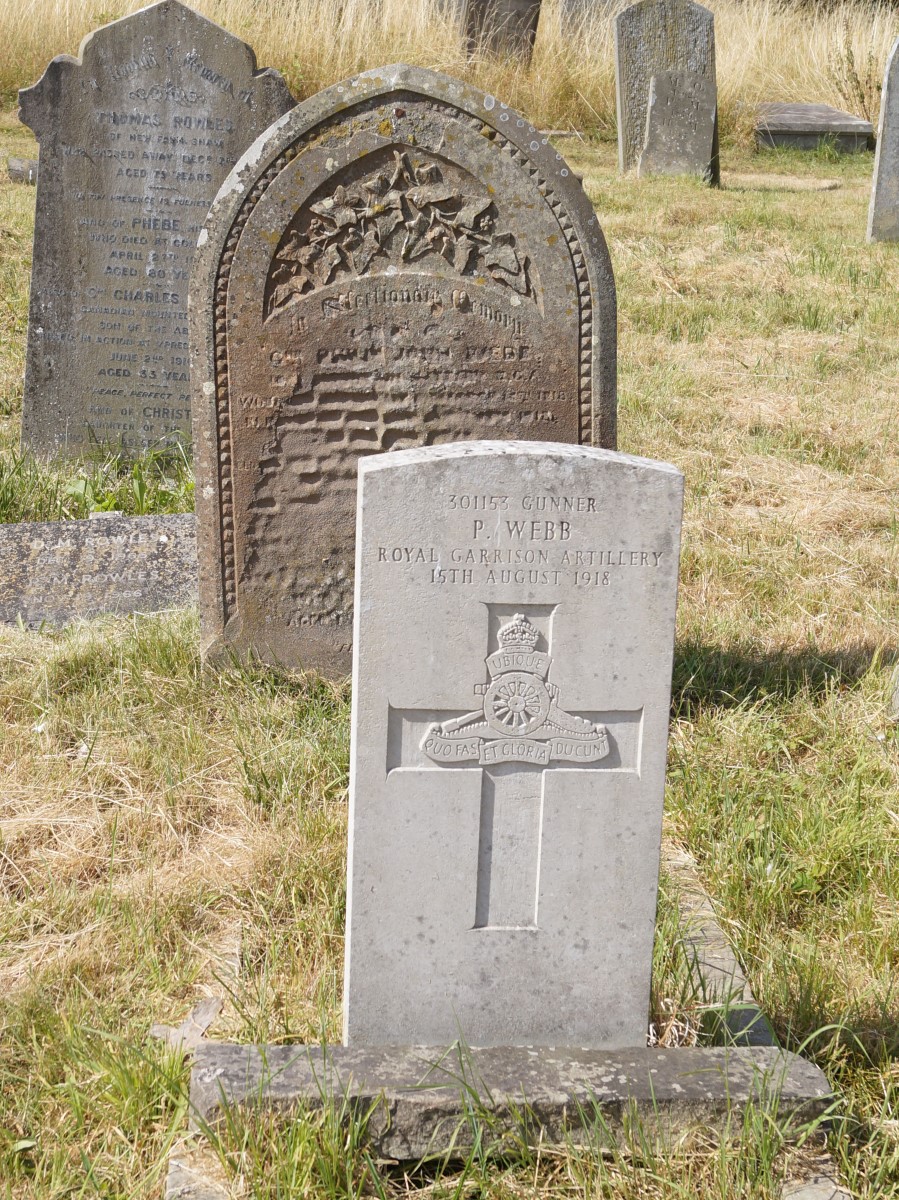
Philip's grave in Newtown Road Cemetery, Newbury. |
SOLDIER’S FUNERAL. – The funeral took place on Tuesday, of Gunner P Webb, 10th Mountain Battery, RGA, eldest son of Mr J W Webb, Whitelands, Peasemore. The first part of the service was held in St John’s Church, Rev R L Majendie officiating, and the internment at Newbury cemetery. A bearer party and bugler attended from Reading Barracks, and the last post was sounded at the graveside. Messrs E Hart & Sons were the undertakers. The late Gunner Webb joined the service in July 7th, 1915, having previously been a baker in the employ of Mr Whitehorn of Bartholomew-street. He trained in Yorkshire, and was drafted to France in November, 1916. Slightly wounded at Vimy Ridge, and was sent to Salonica at the end of 1916. Whilst here contracted enteric, malaria and typhoid fevers in succession, and was in hospital at Malta, subsequently at Birmingham and Croydon. In 1917 was sent to Egypt and Palestine, wounded after crossing the Jordan, and in hospital some time at Cairo. Returned to Birmingham hospital a second time, and died there on Aug 15th. His only brother Alec, is in the Royal Naval hospital at Haslar, and unable to attend the funeral.
Could things get worse for his widow, Emily? Sadly they could:
Newbury Weekly News, 21 November 1918 - Deaths
WEBB – November 12th, Philip William, only child of the late Gnr Webb and Mrs Webb, of 2, Shrewsbury Terrace, Buckingham Road, Newbury, age 1 year 10 months. – Deeply mourned.
Little Philip was buried in the same grave as his father.
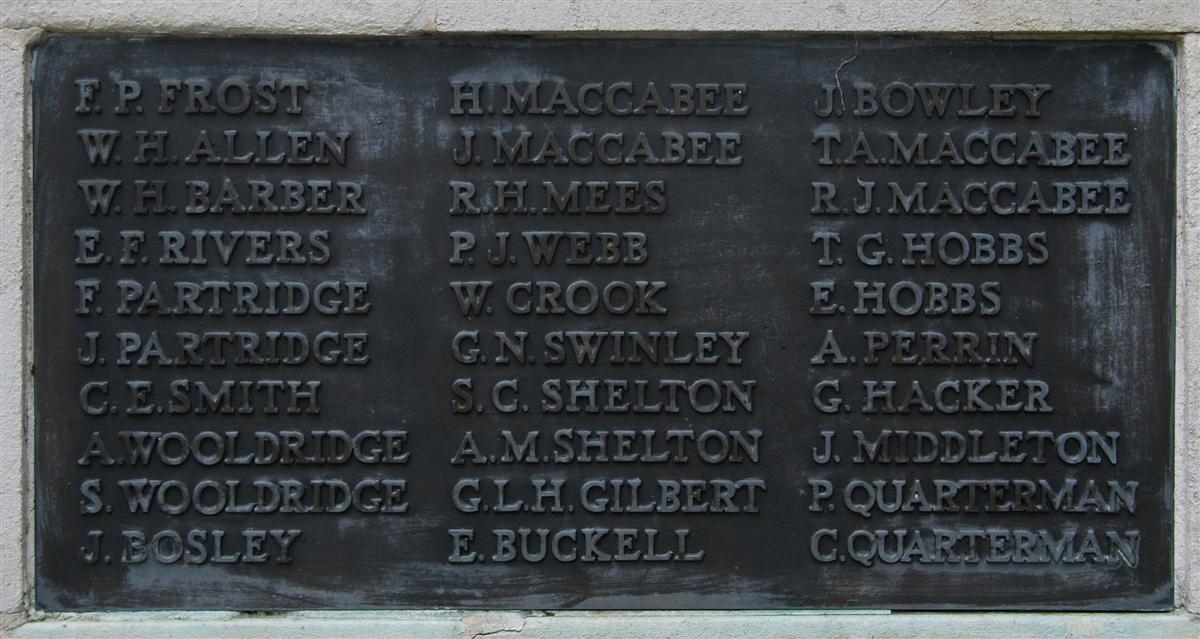
Philip's name on Newbury War Memorial (middle) |
Locally Philip is remembered through his grave in Newtown Road Cemetery, where, in 1993, the Commonwealth War Graves Commission added a headstone to the family plot after the large family headstone has become illegible. In the 1980s the headstone inscription was still partially legible when the memorial inscriptions in the entire cemetery were recorded on behalf of the Berkshire Family History Society (copy available in Newbury Library). Included in the inscription was the only surviving record of the date that Philip was wounded.
He is also remembered on tablet 2 of the Newbury Town War Memorial, the memorial board and roll of honour in St Nicolas Church, Newbury.
His parents also ensured that he was included on the Brightwalton War Memorial and the roll of honour in All Saint’s Church, Brightwalton.

